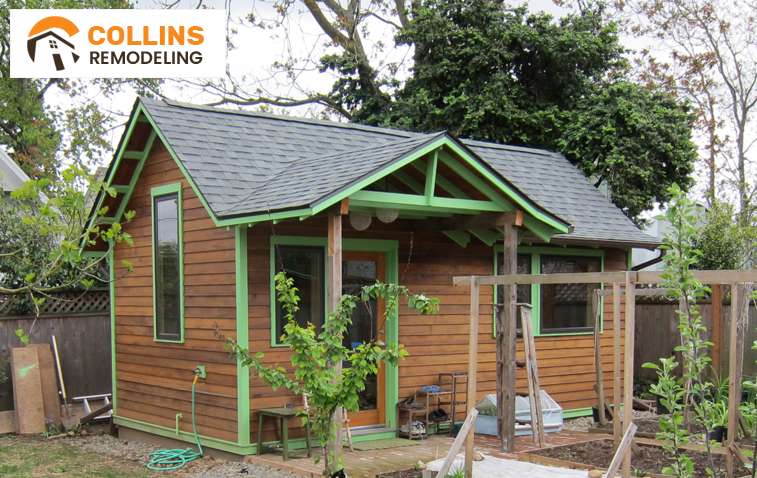Are you planning on building an ADU (Accessory Dwelling Unit) in Alameda? Before diving into your home renovation project, it’s crucial to understand the local regulations that govern this type of construction.
It’s essential to understand the various factors that can influence construction cost and rental income potential. Factors such as property layout, location, and financing options should all be carefully considered before embarking on an ADU project.
In this guide, we’ll go through everything you need to know about Alameda’s ADU regulations so you can ensure a smooth and successful project. So, let’s dive in and learn about Alameda’s ADU regulations.

An Accessory Dwelling Unit, commonly known as an ADU, is a secondary living space that can be built on a property that already houses a primary residence. ADUs come in various forms: they can be standalone structures constructed in your backyard, attached to the main dwelling, or even created by converting a part of your existing home, such as a basement or garage.
These units typically include essential living facilities like a kitchen, bathroom, and sleeping area. Offering a combination of privacy and proximity, ADUs are highly versatile. They can be used for various purposes, such as housing for extended family, rental income, or a workspace.
Building an ADU on your property presents numerous benefits:
Remember, while these benefits are appealing, it’s essential to adhere to Alameda ADU regulations to ensure your project is compliant and successful.
When it comes to ADUs, there’s considerable variety, and the type you choose largely depends on your specific needs, property layout, and, of course, compliance with Alameda’s ADU regulations. Here are the most common types of ADUs:
At Collins Remodeling, we have experience building all these types of ADUs. We can guide you through the process, ensuring that the result aligns with your needs while adhering to all Alameda ADU regulations.
First, you’ll need to determine if your property is in a zone where ADUs are allowed. The City of Alameda’s Zoning Ordinance will provide this information – it’s essential to review this before starting your project. After determining that your property is correctly zoned, you must apply for a building permit through the Alameda Building Department. This process involves submitting detailed plans of your proposed ADU for review.
The plans must demonstrate compliance with local regulations, including requirements on unit size, height, setbacks, and parking. The review process can take several weeks, so it’s advisable to plan for this timeframe. Once your permit application is approved, you can proceed with construction. However, regular inspections will be conducted throughout the building to ensure compliance with the approved plans and local building codes.
The design of your ADU should blend seamlessly with the existing architectural style of your main home to maintain aesthetic consistency. Pay special attention to the unit’s layout, ensuring it maximizes the limited space without compromising comfort or functionality. Strategically placed windows can invite natural light, and intelligent storage solutions can help to keep the space clutter-free.
Accessibility features, if needed, should also be a part of design planning. Consider the potential impact of construction on your neighbours, and aim for a design that respects their privacy and minimizes disruption.
The cost of constructing an ADU can vary greatly, depending on several factors:
The average cost to build an ADU in Alameda typically falls between $350 and $412 per square foot. However, consider that many variables can influence the total cost of your project. Unique aspects of your property necessitate special surveys or additional considerations that could add to the overall expenditure.
For a more accurate estimate tailored to your project and property, request a free estimate from the experienced team at Collins Remodeling. Our professionals will evaluate your specific needs, property layout, and project scale to provide a detailed, customized cost estimate, helping you plan your budget more effectively.

Financing an ADU construction project is a critical aspect that needs careful planning. Here are some standard financing options that you can consider:
Remember, each of these options has its pros and cons. It’s essential to weigh these carefully and consider your financial situation, risk tolerance, and long-term plans before deciding.
Renting out your ADU can provide a steady source of income and could significantly offset the initial construction costs over time. The potential rental income from an ADU in Alameda, like any real estate venture, can vary based on several factors. These include the location of your property, the size and amenities of the ADU, and current market conditions.
A well-designed ADU in a desirable location can attract a premium rent. Moreover, if your ADU offers unique features such as energy-efficient appliances, high-end finishes, or accessibility features, it can increase its rental value.
It’s also worth noting that ADU rentals are in high demand, and vacancy rates are typically lower than traditional rental properties. This assures a consistent income stream for ADU owners. Be sure to research market rents in your local area to estimate potential rental income accurately.
To discuss the rental income potential of your ADU project, feel free to give our team a call at (510) 995-0105. We have extensive experience in ADU construction in Alameda and can provide valuable insights to maximize your return on investment.
Building an ADU in Alameda can be a wise investment with various benefits. However, it’s crucial to consider the many factors that can affect the construction cost, choose the right financing option for your specific needs, and understand the rental income potential of your ADU project. With proper planning and guidance from a reputable contractor like Collins Remodeling, you can build an ADU that not only adds value to your property but also provides a steady source of income for years to come.